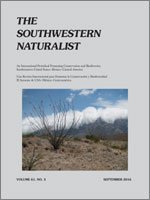Sand shinnery oak (Quercus havardii) prairies are increasingly disappearing and increasingly degraded in the Southern High Plains of Texas and New Mexico. Restoring and managing sand shinnery oak prairie can support biodiversity, specific species of conservation concern, and livestock production. We measured vegetation response to four treatment combinations of herbicide (tebuthiuron applied at 0.60 kg/ha) and moderate-intensity grazing (50% removal of annual herbaceous production) over a 10-year period in a sand shinnery oak prairie of eastern New Mexico. We compared the annual vegetation response to the historical climax plant community (HCPC) as outlined by the U.S. Department of Agriculture Ecological Site Description. From 2 to 10 years postapplication, tebuthiuron-treated plots had reduced shrub cover with twice as much forb and grass cover as untreated plots. Tebuthiuron-treated plots, regardless of the presence of grazing, most frequently met HCPC. Tebuthiuron and moderate-intensity grazing increased vegetation heterogeneity and, based on comparison of the HCPC, successfully restored sand shinnery oak prairie to a vegetation composition similar to presettlement.
How to translate text using browser tools
1 September 2016
Restoring sand shinnery oak prairies with herbicide and grazing in New Mexico
Jennifer C. Zavaleta,
David A. Haukos,
Blake Grisham,
Clint Boal,
Charles Dixon
ACCESS THE FULL ARTICLE

The Southwestern Naturalist
Vol. 61 • No. 3
September 2016
Vol. 61 • No. 3
September 2016




